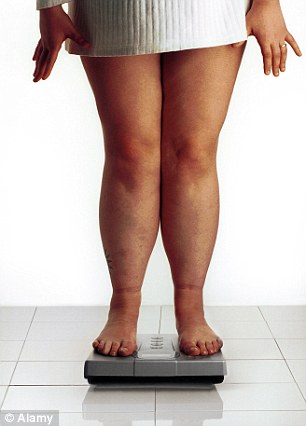Obesity is still rising among American adults, despite more than a decade of public-awareness campaigns and other efforts to get people to watch their weight, and women have now overtaken men in the obese category, new government research shows.
For the last several years, experts thought the nation’s alarming, decades-long rise in obesity had leveled off
But the Centers for Disease Control and Prevention said in a report Thursday that the obesity rate has climbed to nearly 38 percent of adults, up from 32 percent about a decade earlier.”This is a striking finding” and suggests that a situation that was thought to be stable is getting worse, said William Dietz, an obesity expert at George Washington University.
Experts said they had no explanation for why the rate appears to be rising.The report, based primarily on a survey conducted in 2013-14, also found the obesity rate was significantly higher for women, at 38 percent, compared with 34 percent for men. The rates for men and women had been roughly the same for about a decade.
Obesity is considered one of the nation’s leading public health problems. Until the early 1980s, only about 1 in 6 adults was obese, but the rate climbed dramatically until it hit about 1 in 3 around a decade ago.
“Clearly it is a huge issue in Philadelphia,” said Cheryl Bettigole, the city health department’s director of chronic disease prevention. She was surprised by the new national numbers and did not have equivalent new data for the city. “We see obesity everywhere these days, but we see high rates in poor neighborhoods and communities of color.”
Obesity rates in the more affluent suburban counties tend to be lower.
Philadelphia has tried to reduce obesity through a wide-ranging series of initiatives in recent years, from working with corner stores to increase their selection of fresh fruits and vegetables to a sort of fresh-foods supplement to food stamps. Participants can spend $5 at a farmers’ market and get back $2 worth of “Philly Food Bucks” for the purchase of fresh produce.
While obesity rates among adults in the city have continued to rise, there is some early evidence of success among children
Obesity rates among schoolchildren dropped by 6.3 percent between the 2006-07 and 2012-13 school years, and even more among severely obese and African American children.The new CDC figures come from a regular government survey that involves not only interviewing people about their girth but also actually weighing them. Because of that, it is considered the gold standard for measuring the nation’s waistline.
However, it has about 5,000 participants each year – far fewer than some other federal surveys that ask about weight. Generally, it can be harder to draw reliable national conclusions from a smaller survey.
Like Philadelphia, the federal government has undertaken campaigns to encourage people to eat better and exercise. New federal rules have been adopted to remove artificial trans fats from grocery store foods and to require chain restaurants to post calorie counts, though those have not gone into effect yet.
Meanwhile, soda consumption has dropped in recent years, and fast-food chains have adopted healthier menus.
The widening gap between men and women seems to be driven by what’s happening among blacks and Hispanics, said the study’s lead author, the CDC’s Cynthia Ogden.
Obesity rates for white men and white women remain very close
But for blacks, the female obesity rate has soared to 57 percent, far above the male rate of 38 percent. The gender gap is widening among Hispanics, too – 46 percent for women, 39 percent for men.
The report also looked at obesity in children but did not see much change. For people ages 2 to 19, the rate has been holding at about 17 percent over the last decade or so.
Health officials have been especially focused on obesity in children
A CDC report last year noted a possible glimmer of hope: a decline in obesity among children ages 2 to 5. Their rate had fallen to about 8 percent in the 2011-12 survey, down from 14 percent a decade earlier.
In a piece of good news, the new, 2013-14 report suggests that the decline among toddlers was real and not a statistical fluke. The rate was found to be holding pretty much steady around 9 percent.
The CDC measures obesity by calculating body mass index, a ratio of weight to height. For adults, a BMI of 25 to 29.9 is overweight, and 30 or higher is obese. According to CDC definitions, a 5-foot-10 man is overweight at 174 pounds and obese at 209.
Obesity rates have more than doubled in adults and children since the 1970’s (National Center for Health Statistics, 2009). While recent estimates suggest that the overall rates of obesity have plateaued or even declined among some groups, obesity is widespread and continues to be a leading public health problem in the U.S. (Ogden et al., 2014; Robert Wood Johnson Foundation, 2015; Wen et al., 2012). In addition, severe obesity is a serious and increasing problem among children, adolescents, and adults (Fryar et al., 2012; Skinner & Skelton, 2014). Plus, substantial disparities exist based on demographics (e.g., race-ethnicity, gender), geographic region, and socioeconomic status (SES). (See the section on the Relationship Between Poverty and Obesity for more information on SES disparities.)
Adult Overweight and Obesity in the U.S.
More than two-thirds of U.S. adults are overweight or obese (Ogden et al., 2014). In general, rates of overweight and obesity are higher for African-American and Hispanic women than Caucasian women, higher for Hispanic men than Caucasian and African-American men, higher in the South and Midwest, and tend to increase with age (Ogden et al., 2014; Gregg et al., 2009; Sherry et al., 2010). Research also shows that the heaviest Americans have become even heavier the past decade (Beydoun & Wang, 2009).
Racial-Ethnic Disparities
Recent national data show that 82.0 percent of Black women and 77.2 percent of Hispanic women are overweight or obese compared to 63.2 percent of White women (Ogden et al., 2014). In addition, over half of Black women are obese (versus 37.1 percent of Black men and 32.8 percent of White women) (Ogden et al., 2014). Extreme obesity continues to be higher among women (8.3 percent) than men (4.4 percent), especially among Black women who have more than double the rates of extreme obesity as White and Hispanic women (16.4 percent versus 7.4 percent and 7.6 percent) (Ogden et al., 2014). Rates of overweight or obesity are higher for Hispanic men (78.6 percent) compared to Black men (69.2 percent) and White men (71.4 percent) (Ogden et al., 2014).
































